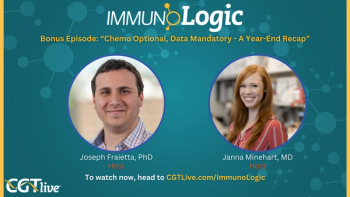
Novel Computational Platform scAAVengr Speeds Up Identification of Gene Therapy Viral Vectors
While focused on the retina, the researchers showed the platform works for the identification of AAVs that target tissues in various organs.
This content originally appeared on our sister site,
Researchers from the University of Pittsburgh School of Medicine have developed a computational platform capable of identifying top-performing viral vectors that could deliver
According to the university, the technology, described in a paper published in eLife, streamlines development of gene therapy approaches for the treatment of genetic blinding disorders. The approach helps speed up identification of suitable gene-carrying candidates able to accurately deliver therapy to an affected part of the retina, thus saving time and resources.
“Vision loss has a huge impact on quality of life. It has long been near the top of the greatest fears of people, alongside cancer and Alzheimer’s disease,” senior author and McGowan Institute for Regenerative Medicine affiliated faculty member Leah Byrne, PhD, assistant professor of ophthalmology at Pitt, said in a statement released by the university. “But the field of vision restoration has entered a new era, where many patients have received effective treatment for the very first time. Because of that, the potential of our new platform is thrilling—it will allow us to translate emergent therapies that are already working for some patients into the clinic much more rapidly.”
McGowan Institute affiliated faculty member José-Alain Sahel, MD, chairman and distinguished professor of the Department of Ophthalmology at the University of Pittsburgh School of Medicine, director of the UPMC Eye Center, and the Eye and Ear Foundation Endowed Chair of Ophthalmology, is a co-author on the study.
According to the university, even though blinding genetic disorders that affect the retina are considered rare, approximately 1 in every 3000 people worldwide carries 1 or more copies of genes that cause retinal degeneration and loss of vision. For centuries, many people with inherited blindness were all but guaranteed to spend a portion of their lives unable to see.
Now, with several gene therapies already on the market in Europe and the United States, and dozens more entering clinical trials, hope for people with inherited blindness is within reach, but a key obstacle remains: ensuring that vectors, or inactivated viruses carrying the therapeutic genetic code, enter the exact cells that scientists are targeting. The retina is composed of hundreds of millions of cells that are arranged into a series of layers, so precisely targeting the vector to a specific location within that universe is not a trivial task.
To approach the problem, researchers developed
The traditional approach of evaluating AAVs is painstakingly slow, requiring several years and many experimental animals. It also is not very precise since it doesn’t directly measure if AAVs not only entered the cells but also delivered their gene therapy cargo.
The university noted that in contrast, scAAVengr uses single-cell RNA sequencing, which detects if the cargo arrives at its destination safely. And with scAAVengr, that process takes months, not years.
The platform’s uses aren’t just limited to the retina—the researchers showed that it works just as well for the identification of AAVs that target other tissues, including the brain, heart, and liver, according to the release.
“A rising tide lifts all boats, and we hope that this technology propels gene therapy treatments not just in the field of vision restoration but for other purposes,” Byrne concluded. “Rapidly developing fields of gene editing and optogenetics all rely on efficient gene delivery, so the ability to quickly and strategically choose the delivery vectors would be an exciting leap forward.”
Newsletter
Stay at the forefront of cutting-edge science with CGT—your direct line to expert insights, breakthrough data, and real-time coverage of the latest advancements in cell and gene therapy.





































